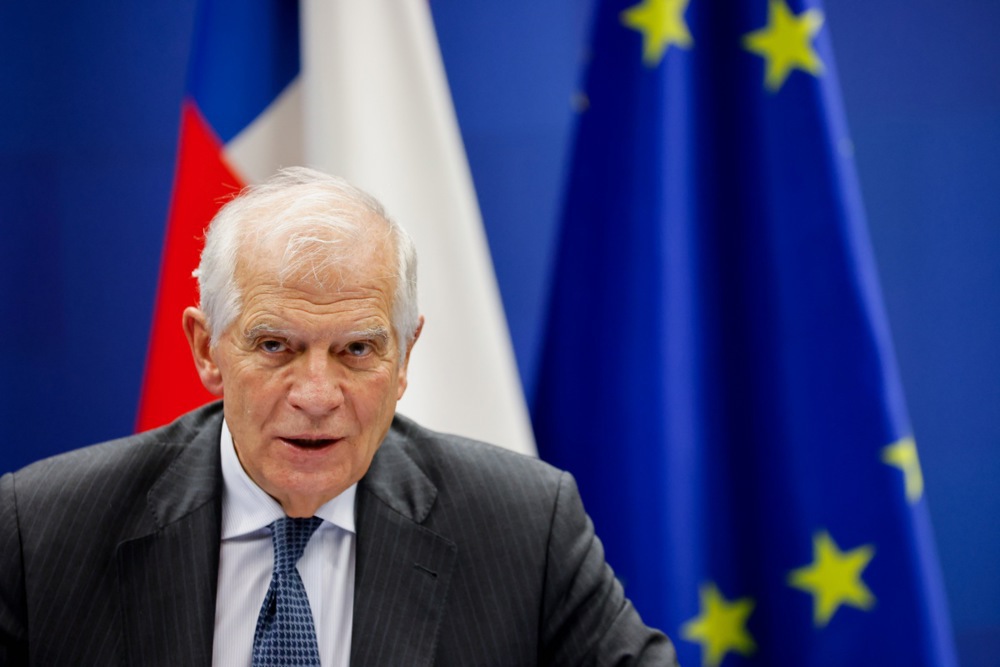Vilnius in Lithuania has unveiled an evacuation plan amid fears of a Russian invasion.
Published on April 23, the five-step plan includes warnings, mass evacuations and an eventual return to the city by residents.
The city’s evacuation strategy was divided into private and public components.
The first focused on co-ordination between relevant institutions, assessing risks and threats and allocating human and transport resources.
The public component was tailored specifically to inform and guide residents of Vilnius.
The plan was put together in light of events in Ukraine and existing US evacuation strategies. It could be activated in case of military invasion, hybrid attacks, nuclear threats and infrastructure incidents.
The city has outlined three major evacuation routes: Towards the cities of Panevėžys and Šiauliai in the North, Kaunas and Klaipėda in the West and Alytus and the Polish border in the South. Specific directions would depend on the nature of any threat identified.

According to the Mayor of Visnius, Valdas Benkunskas, the geographical position of the city obliged local officials to put together the action to plan.
“Vilnius’ geopolitical position obliges us to devote significantly more attention to the defence of the city and civil safety, and that is exactly what we are doing,” said Benkunskas.
Since Russia’s war with Ukraine, Lithuania has been a strong ally of Kyiv and has ramped up its defence capabilities.
Europe and NATO ‘have been in an undeclared war with Russia for many years now’.
However, the Mayor insisted that the evacuation plan was not meant to cause panic.
“The creation of this plan does not mean that we should panic or take concrete actions to abandon our capital. However, knowing what actions to take during evacuation is essential,” he said.
“Better preparedness at every level – individual, family, organisation, city and State – can help us act more smoothly, experience fewer difficulties, and avoid chaos in the event of any disaster or threat,” he added.
In recent months, the European Commission and EU member states have emphasised civilian preparedness as part of their defence strategy.
Speaking to Brussels Signal on April 24, Maria Martisiute, policy analyst at the European Policy Centre (EPC), argued that the civilian aspect of armed conflict was a critical consideration.
“When it comes to war, it is not only the military dimension but the civilian dimension is also important. Civilians play a vital role, ensuring the continuity of essential services such as energy, transport, and infrastructure. It is key that citizens stay informed on their duties and their rights during any kind of emergency,” she said.
Martisiute’s comments echoed those of Benkunskas. During the presentation of the evacuation plan, he argued that citizens’ preparedness served as a deterrent for an enemy.
“I believe that the best form of defence at the city level is proper preparedness by both the municipality and its residents. We must do everything possible to ensure that the enemy does not even consider setting foot here,” he said.
On March 25, the EC revealed its Preparedness Union Strategy. “New realities require a new level of preparedness in Europe. Our citizens, our Member States, and our businesses need the right tools to act both to prevent crises and to react swiftly when a disaster hits. Families living in flood zones should know what to do when the waters rise,” said EC President Ursula Von der Leyen at the time.
The European Commisison also released its own survival kit.
This bloc’s defence strategy comes as EU officials prepare for war.
We are at a turning point, and war is upon us.
On March 7, Hadja Labib, Commissioner for Humanitarian Aid and Crisis Management, stated: “We are at a turning point, and war is upon us… war is just around the corner.
“We’ve been repeating this for three years, since 24 February 2022, trying to create awareness. And today, with the 180-degree turnaround by our Atlantic ally, war is closing in on us, with all the threats it poses to our lives, to disinformation, to hybrid attacks and attacks, one day, on our soil as well, ” she said.
Others pointed out that war had already arrived.
According to Martisiute, a Lithuanian native, Europe has been at war with Russia for some time, but now the EU was preparing for an escalation of the situation with a possible shift to armed conflict in the coming years.
“We have evidence from national intelligence agencies and military authorities that we indeed might be in the situation where two or three years down the line we might be at war with Russia in terms of armed aggression, ” she said.
“Europe and NATO have been in an undeclared war with Russia for many years now. It has primarily been manifested through hybrid attacks, the attacks on EU and NATO infrastructure cables, pipelines, obstructing the navigation of ships, election interference and forced migration,” she added.
As Brussels bureaucrats geared up for potential armed conflict, EU member states have become increasingly focused on preparing both their citizens and civil infrastructure.
Vilnius was not alone in its efforts. Several other countries have taken similar steps to enhance civilian preparedness in the face of growing security concerns.
France was set to distribute a national survival guide to its population. In Germany, discussions last year centred around expanding the country’s network of bunkers and for hospitals to be equipped for wartime scenarios.
Belgium’s medical universities planned to introduce training programmes focused on treating war-related injuries as part of their curriculum.
Europe must remove borrowing limits for defence spending or face the prospect of war with Russia, according to Lithuanian defence minister Dovile Sakaliene. https://t.co/kfcmxTqN1K
— Brussels Signal (@brusselssignal) April 16, 2025





